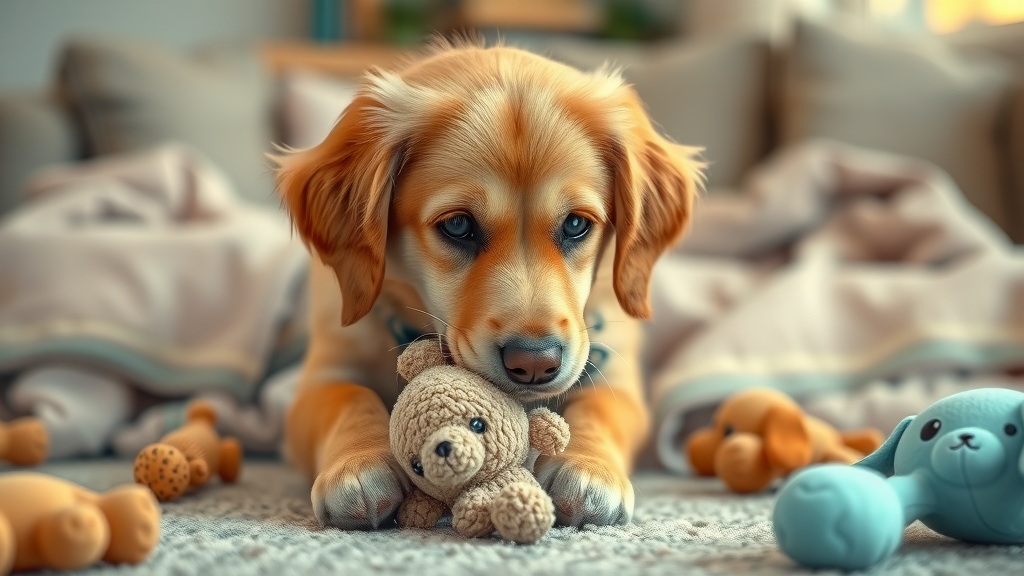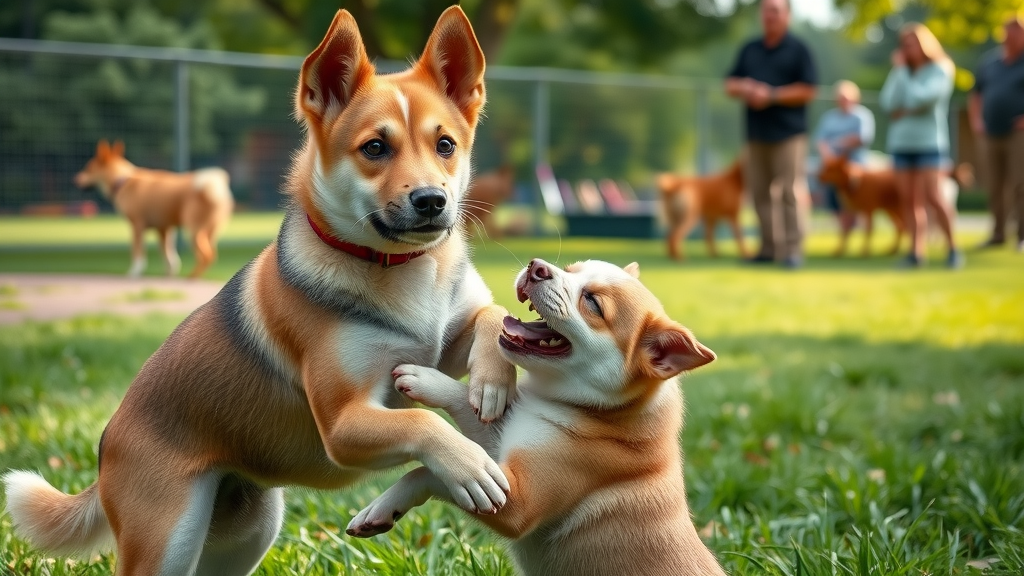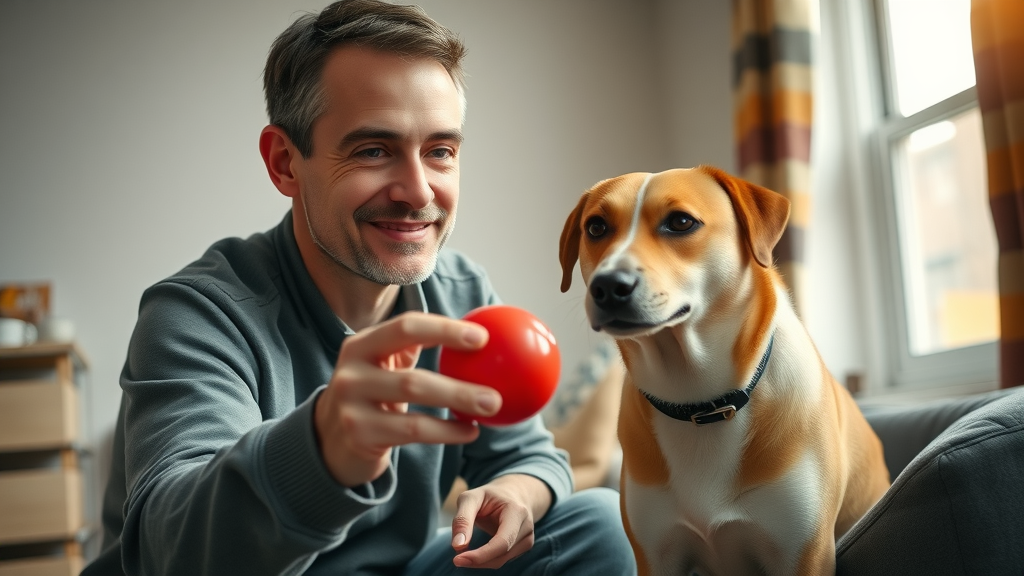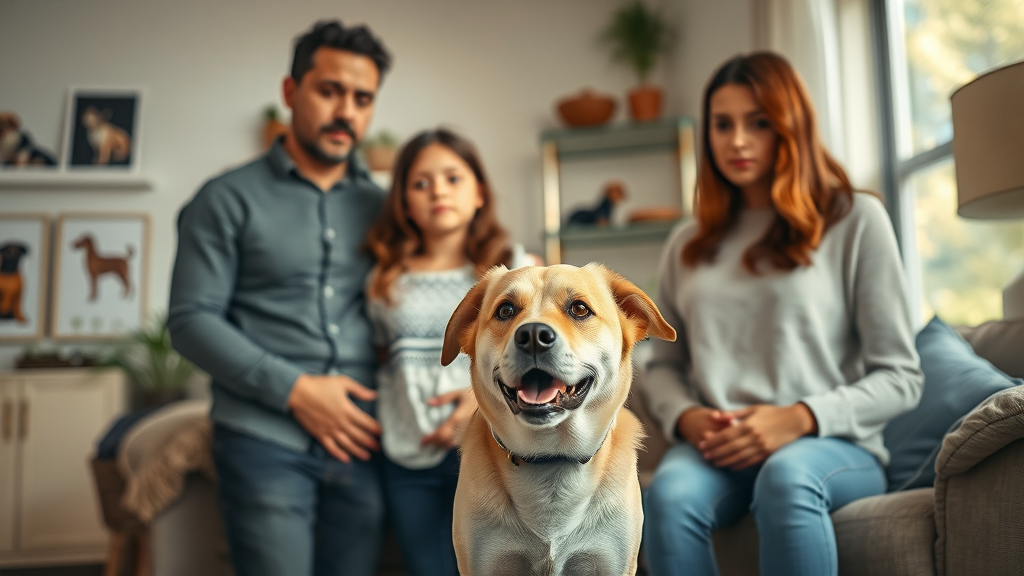Have you ever wondered, “Why does my dog hump everything—sofa cushions, toys, even thin air?” The answer may surprise you, and it’s not always what you think! If your beloved pup's mounting antics have left you puzzled or embarrassed, you’re not alone. This article breaks down the real science and surprising social signals behind dog humping, uncovering the hidden world of canine communication, medical triggers, and simple solutions you can start today. Curious to know more and finally help your dog? Read on!

Unraveling the Mystery: Why Does My Dog Hump Everything So Frequently?
It’s a scene many dog owners know all too well: the dog hump appears out of nowhere, an otherwise mild-mannered pooch suddenly becoming a one-dog circus, fixated on humping a pillow, a playmate, or your favorite blanket. While lots of people assume this behavior is only sexual, the truth is far more complex—and a lot more interesting. The question, “ Why does my dog hump everything? ” opens a window into the world of dog behavior , including how dogs relieve stress, express excitement, communicate social status, and sometimes signal medical issues. Even spayed or neutered or female dogs can display this behavior!
Addressing the root cause of dog humping means understanding the unique blend of instincts, habits, and emotions that can drive this behavior. Sometimes it is nothing more than a burst of pent-up energy—and other times, it may signal that your dog needs extra attention or even a veterinarian’s help. The next sections will break down everything you need to know about why dogs hump and what you should (and shouldn’t) do about it at home.
What You'll Discover About Why Does My Dog Hump Everything?
The real science behind why dogs hump and exhibit humping behavior
How reasons why dogs do this behavior go beyond sexual motivation
Which factors—medical, social, emotional—drive excessive dog humping
Pro tips for managing dog humping at home
Decoding Dog Humping: Reasons Why Dogs Hump Everything Around Them
Deciphering the reasons why dogs hump everything around them starts with a closer look at the full spectrum of canine impulses and body language. A dog hump might look similar across different situations, but the underlying cause varies—sometimes even changing day to day! Common culprits include excitement during play, seeking attention, asserting social status , or reacting to new environments or visitors.
It’s easy to misunderstand this behavior, especially since both male dogs and female dogs can display humping—even when they’re neutered, spayed, or not sexually mature. The answer to “why does my dog hump everything?” can be medical, emotional, or a sign your dog is forming an unwanted habit. Recognizing your pet’s unique triggers is the first step toward helping them and restoring household harmony.
The Most Common Reasons Why Dogs Hump

Excitement or Overstimulation: Many dogs hump when they become overly excited during play, visits, or high-energy greetings—often as a way to cope with their arousal levels.
Seeking Attention: Dogs quickly learn behaviors that grab their owner’s focus. If you react to humping, your dog may repeat the act purely for a response.
Play Behavior: Puppies and adult dogs may mount things and hump other dogs during play, especially if they learned this as a harmless pattern in puppyhood.
Asserting Social Status: Mounting can be a way for dogs to communicate dominance or test boundaries—particularly in group settings.
Habit Formation: Repetitive humping sometimes turns into a compulsive behavior, unrelated to immediate need or situation.
Sexual Maturity: Intact dogs (not spayed or neutered) are more likely to hump due to hormones but even altered pups may retain this instinct.
Stress, Anxiety, or Medical Conditions: Dog humping can signal emotional distress, allergies, urinary tract infection, or other medical causes that should not be ignored.
How Social Status Affects Why Does My Dog Hump Everything?
Social status is an essential part of any dog’s world, and humping can sometimes be a clear signal of where your dog feels they “fit” in the pack. For adult dogs , mounting isn’t always a bid for dominance—it could also be a way of testing boundaries or simply a continuation of playful habits from puppyhood. Dogs often perform this behavior during group play or introductions as part of their social interaction “toolbox.”
However, if your dog is humping excessively or forcefully, especially with other dogs, it may cross the line into problematic behavior. In this context, humping can be an assertion of dominance or a tool to establish leadership among canine peers. Watching for cues—like aggression, barking, or bullying alongside mounting—is crucial in understanding if dog humping is just play or something more concerning.
Table: Common Reasons Why Dogs Hump vs. When to Worry
Reason |
Typical Age/Trigger |
Cause for Concern? |
|---|---|---|
Excitement/Play |
Any age |
No, unless excessive |
Social Status |
Adolescence/Adults |
If aggressive |
Habit |
Persistent |
If obsessive |
Medical causes |
Varies |
Yes, see a vet |
"Not all humping behavior is sexual—sometimes it's just a dog's unique way to deal with excitement, stress, or boredom." – Certified Veterinarian, Dr. Lisa Tran
How Dog Humping Demonstrates Social Status and Communication
Why Dogs Hump Other Dogs: Key Social Triggers for Dog Humping
dog behavior male and female dogs hump other dogs adult dog
Greeting and play invitations
Asserting dominance
Testing boundaries in social groups
Habit from puppyhood

When Social Status and Humping Behavior Become Problematic
Occasional playful mounting is normal, but problems arise when dog humping becomes excessive, aggressive, or stressful for the animals involved. If a dog humps other pets to the point of creating tension or causing fights, it may be time to intervene. The line between play and dominance is usually marked by accompanying behaviors: growling, biting, or posturing indicate a need for a behavioral reset.
If you notice mounting is accompanied by other unwanted dog behavior or the dog humps during every interaction, consult with a professional dog trainer or animal behaviorist for tailored support. Recognizing these warning signs early helps ensure social play remains positive for every member of your furry family.
Is It Normal When Dogs Hump Everything in the House?
Many pet owners worry when dogs begin to hump everything in the house. While moderate, occasional humping is often a harmless dog quirk, relentless or compulsive behavior may point to more serious issues. Dog humping can be a result of stress, coping with household changes, or even lift a red flag for medical causes like urinary tract infection, skin irritation, or hormonal changes in both male and female dogs.
It’s always important to look at frequency and context. Excessive or sudden changes in how often your dog humps —or if you notice your pet is humping non-stop, accompanied by licking or discomfort—should prompt a wellness check with your vet. Behavioral intervention works best with a clear picture of your dog’s overall health and home environment.
Understanding Appeasement, Anxiety, & Medical Causes in Dog Hump Incidents
Anxiety and stress triggers: Dogs may turn to mounting as a form of stress relief in response to routine disruptions, loud noises, or feeling left alone for extended periods.
Compulsive humping behavior: If mounting occurs constantly, resembles a ritual rather than fun or interaction, or interrupts sleep and daily activities, it may be a compulsive disorder.
Underlying medical issues: Allergies, skin conditions, urinary tract infections , or hormone imbalances can also be drivers—especially if your dog is humping while also licking or showing discomfort.
Age-related hormonal changes: Whether it’s a growing puppy, a newly spayed or neutered dog, or a senior canine, body chemistry can influence mounting behaviors.
"Humping can be a dog’s harmless quirk or a sign they need emotional support, not punishment." – Animal Behaviorist, Dr. Jamie Wu
Behavioral Management: What to Do When Your Dog Humps Everything
Managing dog humping requires patience and the right techniques. Not every mount demands correction—sometimes simple redirection can work wonders. The key is to offer clear alternatives and maintain a calm, consistent response. Recognizing your dog's triggers (excitement, boredom, or stress) is essential before deciding how to help your pet.
With a few simple strategies, most owners can minimize unwanted humping without resorting to punishment. Keep reading for practical steps, positive reinforcement tricks, and important signs that it’s time to call in a professional dog trainer.
Safe Techniques to Redirect and Minimize Humping Behavior

Distraction with toys or training: When you see your dog mount a pillow or person, calmly distract them with a favorite toy or a basic command ( sit, stay ). Reward calm, non-mounting behavior!
Reinforcing substitute actions: Encourage your dog to greet people or dogs with a sit or paw-shake instead of humping.
Regular exercise and enrichment: Many dogs hump out of boredom. Daily walks, fetch, puzzle games, and brain work can work wonders.
Monitoring interaction: Intervene gently if humping starts during dog playgroups or regulated social time—this keeps things positive and friendly.
When to Seek Professional Help for Dog Humping
Behavior persists despite consistent redirection and enrichment
Aggression accompanies humping—snarling, growling, or biting
Noticeable changes in your dog’s health or hygiene (swelling, excessive licking, lethargy)
Humping behavior interferes with playtime, exercise, or creates problems during socialization
Educational video demonstrating professional dog trainer techniques to manage excessive humping behavior, including redirection, enrichment, and positive reinforcement. Indoor and outdoor settings with multiple dogs, step-by-step instructions… Watch the full video on our website!
People Also Ask About Why Does My Dog Hump Everything?
Is it normal for dogs to hump all the time?
Is it normal for dogs to hump all the time? Answer
It’s normal for dogs to hump occasionally, especially during play or bouts of excitement. However, if your dog is humping all the time, it may indicate underlying stress, habit, or a potential medical condition that needs your attention. Persistent or compulsive mounting warrants a check-in with your vet and possibly a professional dog trainer.
Should I stop my dog from humping stuffed animals?
Should I stop my dog from humping stuffed animals? Answer
It’s usually harmless if your dog humps a stuffed animal from time to time. If the behavior is not excessive or damaging, you can simply supervise to make sure it doesn’t become compulsive. Redirect your dog’s energy if it interferes with social time, causes distress, or is unmanageable.
Is it healthy for dogs to hump things?
Is it healthy for dogs to hump things? Answer
Occasional humping is part of normal dog behavior for both male and female dogs. However, if your dog is humping objects obsessively or this is a newly developed habit in an older dog, it’s important to rule out medical issues, such as a urinary tract infection , allergies, or hormonal problems. When in doubt, check with your vet.
Are dogs happy when they hump?
Are dogs happy when they hump? Answer
Humping sometimes means your dog is excited or feeling playful, but it can also be a sign of stress or anxiety. Dogs don’t necessarily hump only because it feels good ; they may use mounting to handle complex emotions or get your attention. Watching the context and other signals from your dog can tell you more about their emotional state.
Helpful Strategies and Proactive Tips for Dogs That Hump Everything

Early intervention and boundaries: Address mounting behavior early with gentle redirection, clear alternatives, and consistent boundaries.
Consistent routines and enrichment: Predictable schedules and daily enrichment (training, toys, walks) reduce anxiety and boredom—key triggers for humping.
Reward calm behavior: Use treats and praise to reinforce calm greetings and play, not mounting or humping.
Regular health screenings: Routine vet visits ensure humping isn’t a symptom of underlying medical problems.
Supervised play sessions: Especially during puppy or adolescent stages, supervision helps reinforce positive habits and safe social interactions.
FAQs on Why Does My Dog Hump Everything?
Can female dogs also exhibit humping behavior?
Absolutely. Both female and male dogs can mount or hump, even if spayed or neutered. It’s driven by a mix of play, habit, stress, and social communication—not just hormones.Should I punish my dog for humping?
No. Punishing a dog for humping can increase anxiety and confusion. Instead, focus on redirection, positive reinforcement, and identifying behavior triggers.When is humping considered a medical issue?
If humping is constant, accompanied by physical symptoms (licking, discomfort, skin irritation), or a sudden new behavior, consult your veterinarian to rule out medical problems like urinary tract infection or allergies.Will neutering/spaying stop my dog's humping behavior?
While neutering or spaying reduces hormone-driven behaviors in intact dogs , it may not completely stop humping, as the urge can be based on play, emotion, or social factors.
Expert Insights: Prevention and Long-Term Management of Why Does My Dog Hump Everything?

Creating a calm daily routine for dogs prone to humping
Signs your dog needs a professional trainer or vet
Case studies on successful dog hump intervention
How balancing affection and boundaries leads to happier homes
Experts agree: A proactive, gentle approach paves the way for more peaceful pets and calmer households. Introducing daily structure, teaching substitute behaviors, and reaching out to professionals if behavior persists are key pillars for long-term harmony. Case reports show that even the most persistent humping can decrease dramatically with patience, enrichment, and professional support.
In short, building a relationship of trust and understanding, offering consistent mental and physical outlets, and seeking timely help if needed make all the difference for dogs that hump everything.
Summing Up Why Does My Dog Hump Everything: Key Takeaways for Dog Owners
Summary of top reasons behind dog humping behavior
Practical next steps to support your pet’s emotional and social needs
Reminder to seek professional guidance if unsure
To help your dog, notice specific triggers, offer healthy alternatives, and consult a vet or trainer if humping turns problematic—your proactive care means a happier, well-behaved best friend.
Stay on Top of Why Does My Dog Hump Everything — Subscribe for More Expert Advice
Stay informed. Stay inspired. Subscribe to our monthly pet newsletter for the best in cat and dog care. 🐾 Join now — your inbox will thank you.
Understanding why your dog humps everything involves recognizing various factors beyond sexual motivation. According to the American Kennel Club, humping can be a sign of dominance, stress, overstimulation, or even a learned behavior from puppyhood. ( akc.org ) Additionally, the ASPCA notes that medical issues such as urinary tract infections or skin allergies can also lead to increased humping behavior. ( aspca.org )
To address this behavior, it’s essential to identify the underlying cause. If the humping is due to excitement or attention-seeking, redirecting your dog’s energy through increased physical and mental stimulation can be effective. However, if the behavior is sudden or excessive, consulting with a veterinarian is advisable to rule out any medical concerns.
 Add Row
Add Row  Add
Add 




Write A Comment